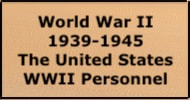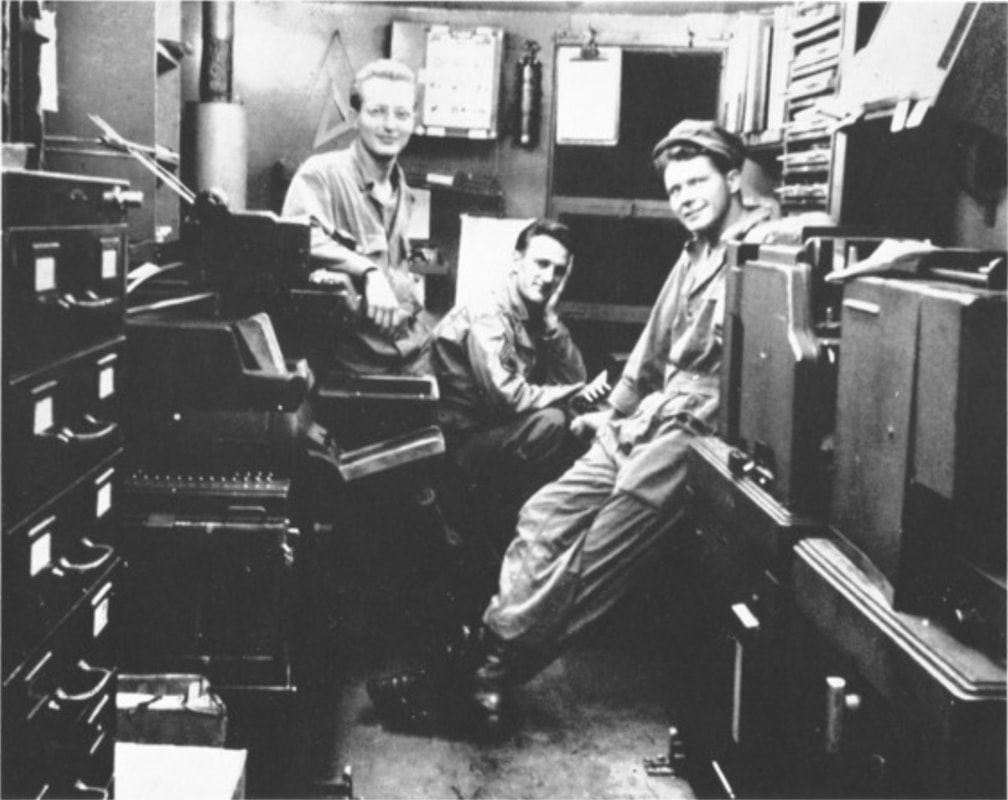bigpigeon.us webpage WWII US > WWII Personnel, © 2023 by Robert A. Christiansen, updated by RAC 22 Nov 2023.
This Big Pigeon submodule contains some aggregate data and miscellaneous information about WWII US military personnel.
This Big Pigeon submodule contains some aggregate data and miscellaneous information about WWII US military personnel.
Links to Big Pigeon's WWII US - WWII Personnel subpages:
- WWII Service Numbers - the system of identifying WWII US armed forces members.
WWII Manpower Acquisition
|
Prior to WWII, US military personnel needs in peacetime had always been met by voluntary enlistments. However, worsening conditions in Europe in 1940 led to the imposition of a draft in late 1940, a year before the US entered WWII. The accompanying table shows the WWII enlisted/drafted breakdown.
|
Enlisted 6,332,000 38.8%
Drafted 11,535,000 61.2% --------------- Served 17,867,000 |
- Draftees were assigned to all service branches.
- Starting in late 1942, all manpower acquisition was through the draft, except for women, 17-year-olds, and men beyond the draft age.
- About 360,00 women, all enlistees, served.
Service Branches
The War Department supported the United States Army, which in WWII consisted of three components, having a combined peak strength around 11.2 million:
The Navy Department supported the:
- Army Ground Forces.
- Army Air Forces, commonly called the Army Air Corps, peak strength 2.4 million.
- Army Service Forces.
The Navy Department supported the:
- United States Navy, peak strength 4,200,000.
- United States Marine Corps, peak strength 660,000.
- United States Coast Guard, peak strength 170,000 (temporarily transferred from the Treasury Department during WWII).
Sources for Big Pigeon's WWII US > WWII Personnel webpage:
- The webpage header photo, WWII Mobile Data Processing, is taken from http://www.ibiblio.org/cizewski/signalcorps/32mru/32mruhistory.pdf - THE HISTORY OF THE 32ND MACHINE RECORDS UNIT (MOBILE) by Otis F. Wollenberg. The photo shows the inside of a 32nd Machine Records Unit truck. In the pre-computer era of World War II, the United States Army used mobile data processing centers to help manage personnel records for the huge US Army. Card punch machines were used to code data onto what were popularly called IBM cards and massive decks of cards were then processed by different machines such as sorters and tabulators. Printers would then generate reports.
- Research Starters: US Military by the Numbers, https://www.nationalww2museum.org/students-teachers/student-resources/research-starters/research-starters-us-military-numbers provided some of the data shown above. This is a webpage of the National WWII Museum in New Orleans, LA, https://www.nationalww2museum.org.


